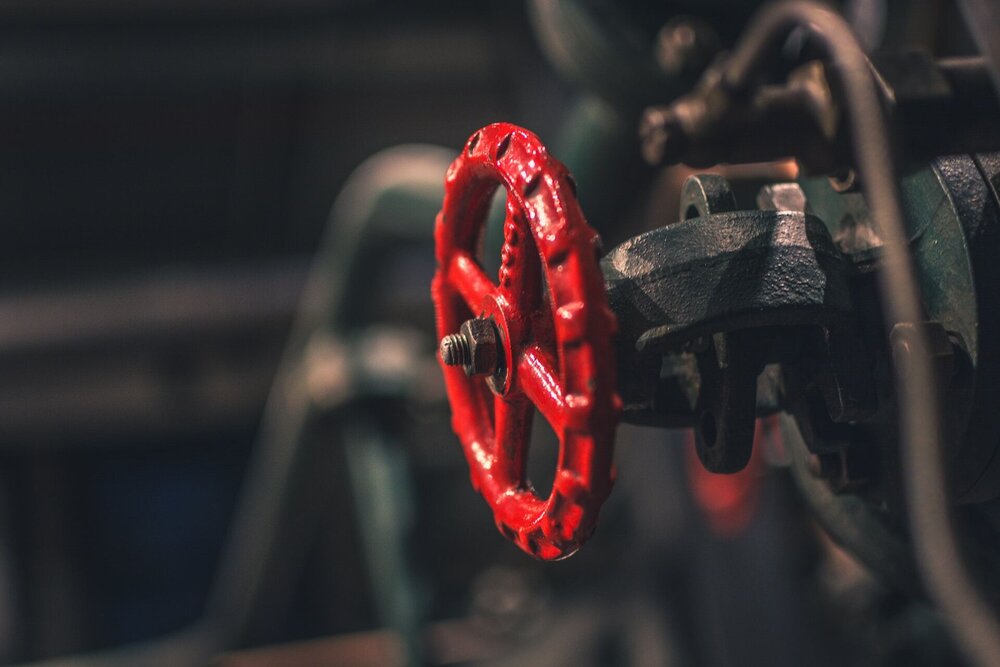Editor’s Note: Protests and demands by the mainstream environmental movement has yet failed to make any substantial changes in the ecological health of the natural world. Day by day, the situation is getting worse. Ecosabotage, on the other hand, deals directly with the problem and stops the powerful’s ability to control nature. The following is a communique submitted anonymously to, and originally published by, Unsalted Counter Info.
Reportback from some valve turners
It is with a heavy heart and hazy skies we announce that 2 different pipeline valves were turned off along the Line 5 route on Anishinaabae land in the great lakes region.This was done on the 13th anniversary of the Kalamazoo River oil spill.This was the 2nd largest inland oil spill in amerikkkan history, dumping 1,000,000 gallons of tar sands crude oil into the river and causing untold damage to the water, land and those who live on it.
Currently, Enbridge is preparing to construct a concrete tunnel beneath the waters of the so-called Great Lakes to house a dual pipeline system in order to increase flow rates and carry even more tar sands from the lands of the north to refineries in the south. The Straits tunnel project is meant to replace a 70 year old pipe that is hastily secured to the bottom of the lake bed, even free floating in some areas.
Enbridge claims that the tunnel is safe, but a tunnel project beneath the straits is a resource intensive project. The tar sands would continue to be extracted, desecrating the land in northern geographies. The refineries in the south still pumping out toxic fumes that pollute nearby Black neighborhoods. The camps of workers near both the straits and the Bad River reroute still disappearing Indigenous women and relatives.The companies that rely on Enbridge oil still operating in the towns and cities, underpaying workers and enacting anti-Black and anti-Indigenous violence in nearby communities.The tunnel itself, bored through the bedrock beneath the water, containing two high-volume pipelines transporting millions of barrels of oil monthly, operated by a company with a long history of environmental catastrophe.
It’s easy to turn a valve. Every 10 or so miles along the pipeline route there is a pump station. Some of these pump stations are larger than others, some containing more of Enbridge’s infrastructure like work trucks, electrical stations, dynamic machinery, communication systems, and field offices. For us, we found pump stations that simply contained a valve and a small brick structure that contains basic comms and electrical components. Many of these places are remote, with response times that vary from 20 minutes to over an hour. Pump stations often contain a high-definition camera with a motion sensor mounted looking directly at the valve. When the motion sensor is triggered, the structure becomes heavily illuminated by flood lights and begins recording. Nothing some spray paint can’t fix! The structures are always surrounded by a fence and are positioned next to or on top of a service road. The pipeline route is easy to see from a satellite image, as it cuts a clear path through the forest. The valve itself sometimes has a nut that is fitted with a large wrench and turned clockwise until you hear a series of musical notes, indicating that the pressure in the pipe has changed. At some valves, there was actually a big red button that just said STOP, which stops flow immediately. For us, we found it incredibly important to call the emergency Enbridge number listed on the facility and tell them we were shutting off the valve. The engineer on the other side of the line sounded very panicked, and immediately shut off flow to the entirity of Line 5. We did this 5 minutes before actually turning the valve, to ensure that the shut down would happen safely, obviously oil spills aren’t something we want to happen as a result of our actions.
In order to protect the water, the land and all the relatives that live on it, companies like Enbridge must stop extractive projects like tar sands. They must stop the flow of oil, because all of our lives depend on it.
And if they don’t, we will.
Photo by Igal Ness on Unsplash
The 2023 DGR conference is scheduled for late August in northern California. This annual gathering is an opportunity for our community to share skills, reflect on our work, strengthen our connections, and plan for the future. While this conference is only open to DGR members, we do invite friends and allies on a case-by-case basis. If you’re interested in attending, please contact us, and if you’d like to donate to support the conference, click here.
